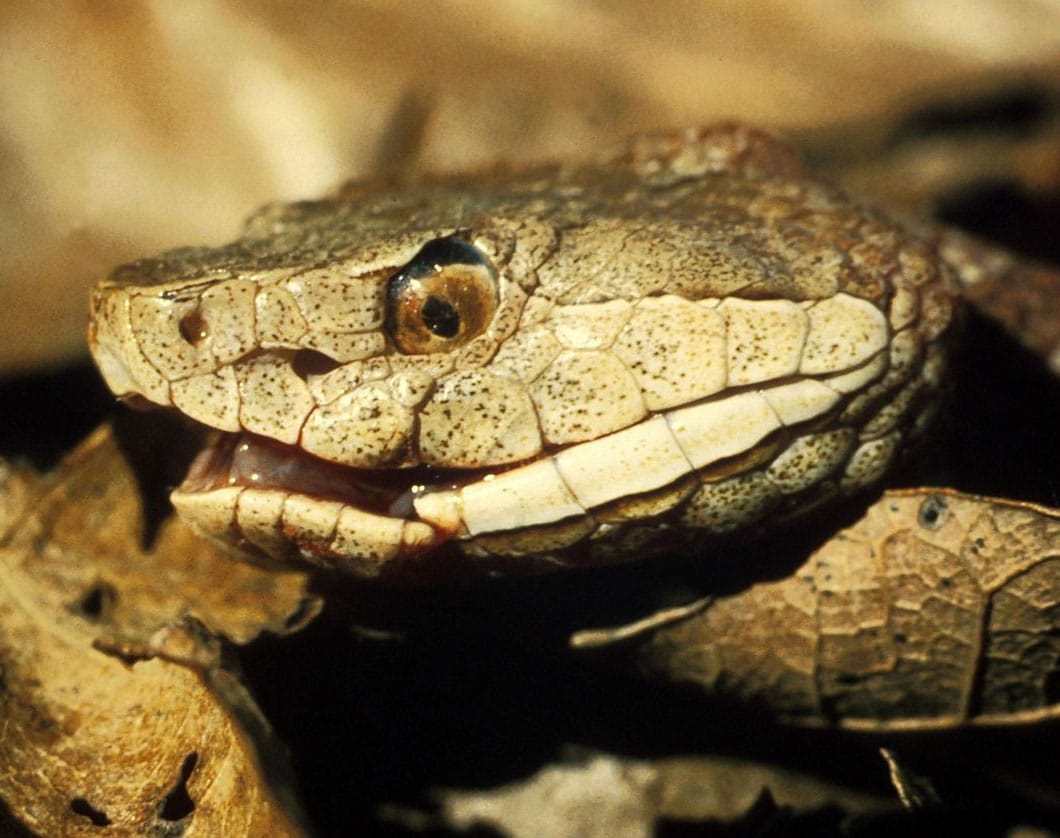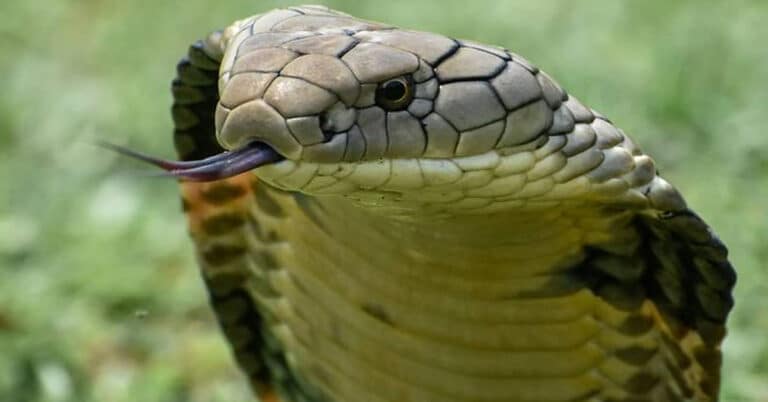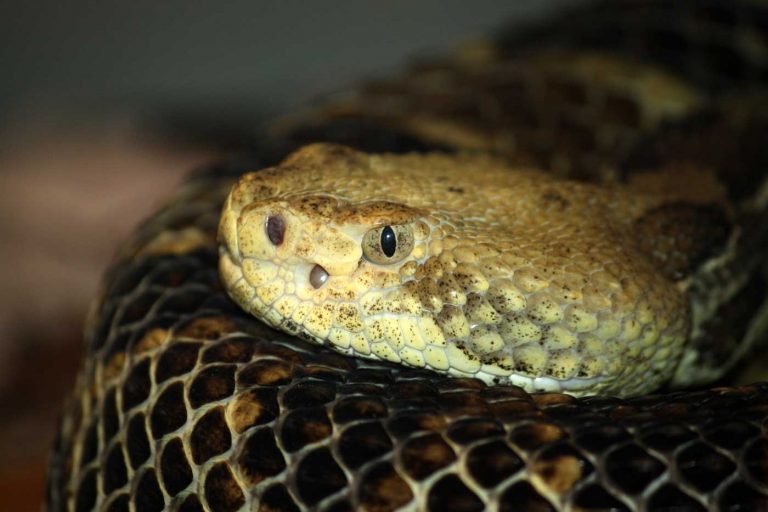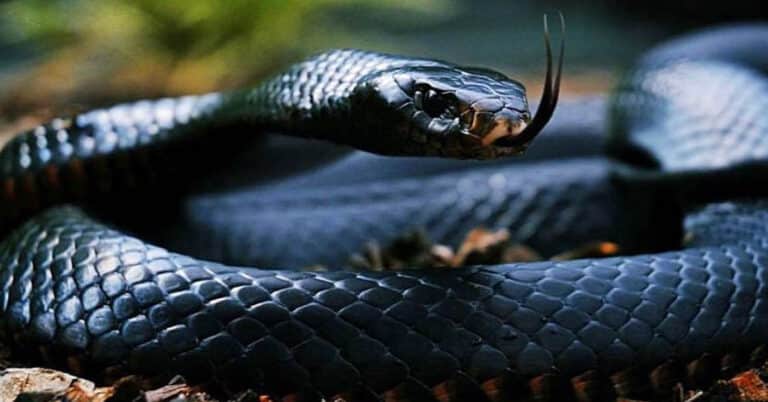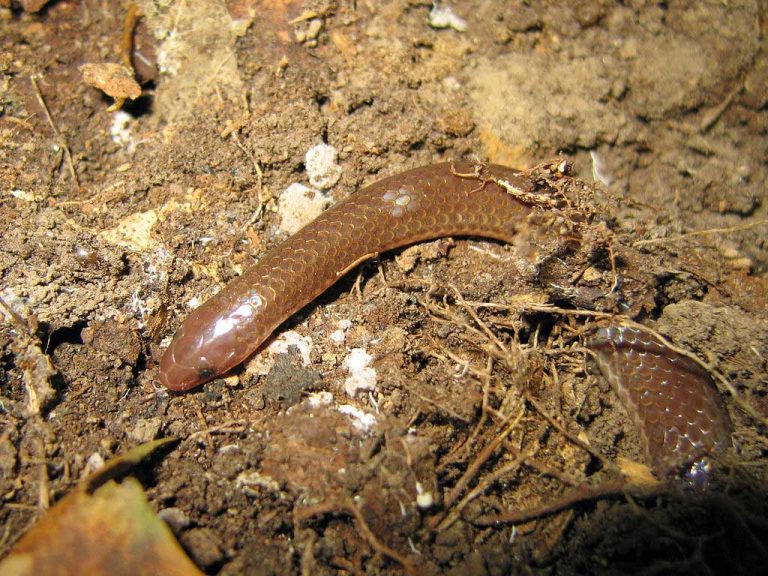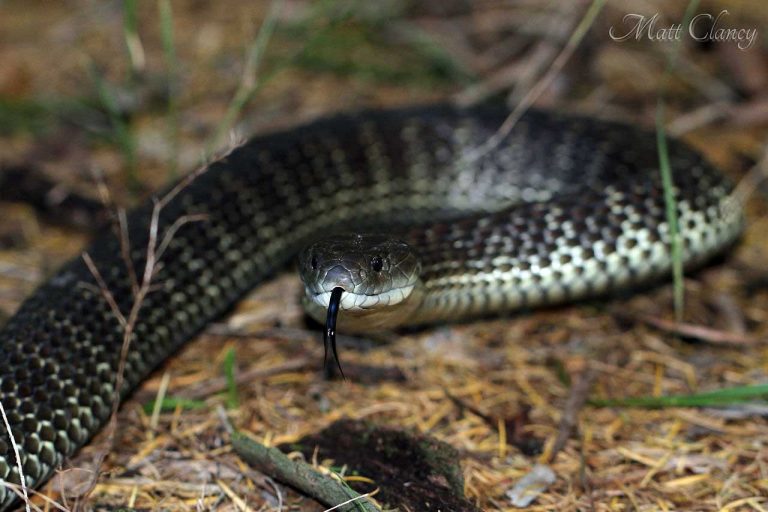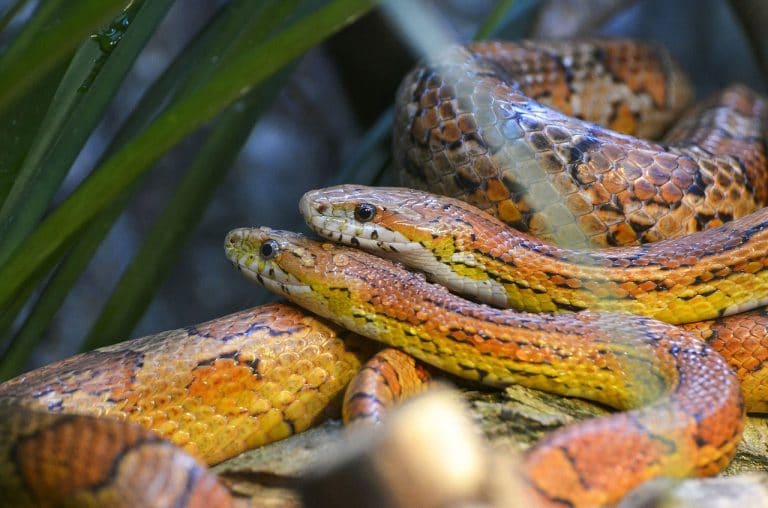Copperhead Snakes
Scientific Classification
| Kingdom: | Animalia |
| Phylum: | Chordata |
| Subphylum: | Vertebrata |
| Class: | Reptilia |
| Order: | Squamata |
| Suborder: | Serpentes |
| Family: | Viperidae |
| Subfamily: | Crotalinae |
| Genus: | Agkistrodon |
| Species: | A. Contortrix |
| Binomial name: | Agkistrodon Contortrix |
Copperheads belong to the species of a venomous snake, Agkistrodon Contortrix. These snakes are endemic to North America. They are members of the pit viper (Croataline) subfamily. There are five recognized subspecies of Copperheads. Accidental human encounters do happen because of the behavior of the copperhead snakes.
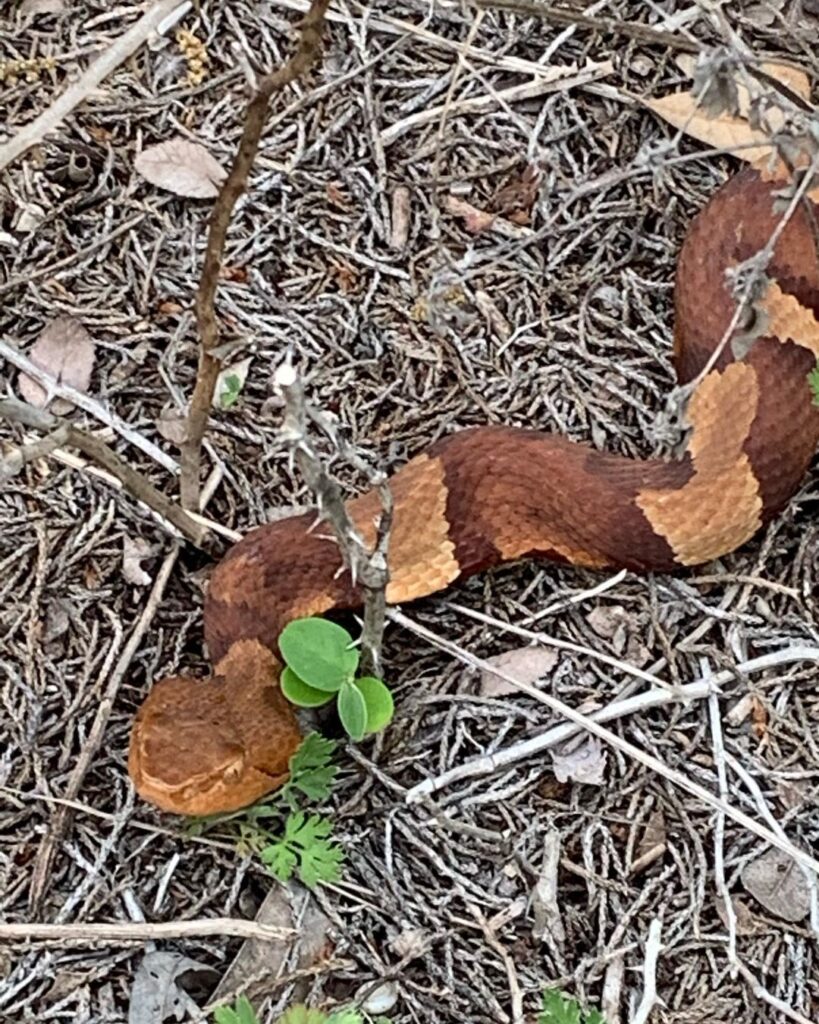
Anatomy
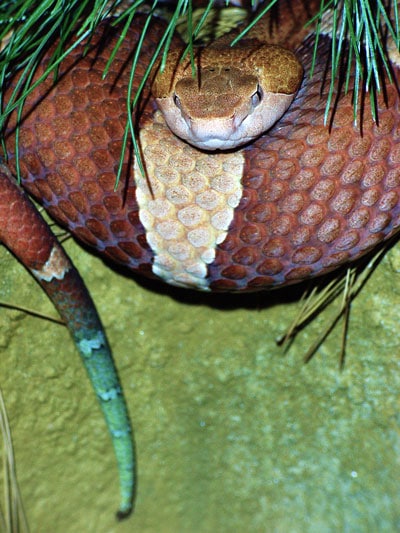
These snakes are of average size ranging from 2 to 3 feet in length. The females are longer than the males. The tails of the males are proportionally longer than that of the females. They have copper colored heads, earning them their name. The body color is reddish tan with banded patterns. These hour glass patterns are the specialty of the Copperhead Snakes. There are certain non venomous species with similar colorings. They are often confused with the copperheads and viewed with fear. But they do not have the hour glass markings that copperheads have.
These snakes have stout, muscular bodies. They have keeled (having ridges) scales. They have distinct necks with large triangular heads. They have vertical pupils, like cats.
Copperhead snakes, when they are young, are more grayish colored. They have yellow tails. They flick these tails as baits to attract prey. The body colors fade with age.
The solenoglyphous fangs (hollow, long and articulated fangs) of the copperheads have lengths proportional in length to the length of the body. The length of the fangs can even be three inches. Even the just born copperheads have fangs that are fully functional. Their venom is as toxic as that of the adults. There is periodical replacement of the fangs, and all these snakes have up to seven replacement fangs located on the gums behind the presently functioning fangs.
There are many color variations among copperhead snakes. The variations depend on their locations. The colors vary from bright to light copper and to dark brown. Apart from being colorful, they possess striking patterns. The back and the sides have background colors that vary from tan to pinkish. The chestnut colored hour glass shaped bands have varying widths. Their copper colored heads are responsible for their name.
Behavior
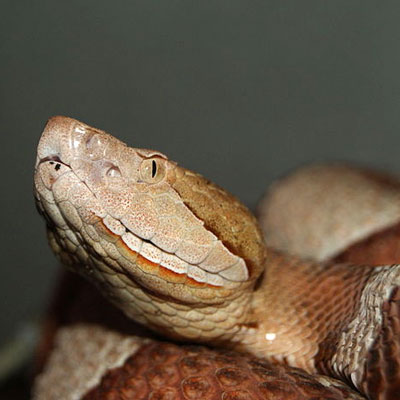
These snakes are very social. In spring and Autumn, they are active during the day. Come summer, they turn nocturnal. They are usually out on humid and warm nights after the rains. These snakes usually stay on the ground. They do climb low trees or bushes to search for prey or to bask in the sunlight. They might occasionally go for a swim.
Habitat
The Copperhead is a venomous snake, endemic to the Florida Panhandle, extending to Massachusetts in the north and Nebraska, to the west. The northern copperheads have the widest range among the five subspecies. You can find them in the northern regions of Georgia as well as Alabama, extending to Massachusetts in the north and Illinois in the west.
Their habitats range from terrestrial to semi Aquatic. These include forested, rocky, hill slopes and wetlands. You can also find them in decaying sawdust and wood piles.
As a Pet
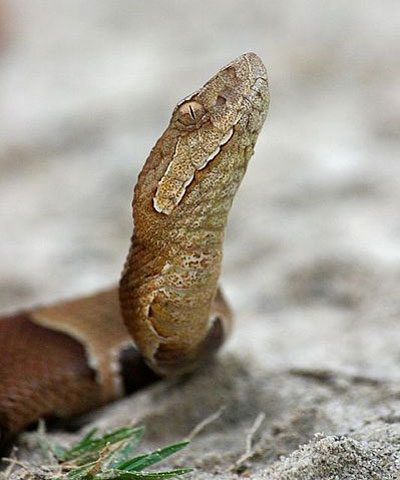
If you are an inexperienced snake keeper, you should not opt for copperheads as pets. Keeping ‘hot’ (venomous) snakes demands a lot of concentration and unwavering attention. The concentration lapse for a moment can spell disaster. Accidents while handling the venomous snakes account for a major portion of the snake bite incidents reported in the US. Always contact an experienced snake keeper who can teach you how to handle venomous snakes.
Breeding
The Copperhead attains sexual maturity at four years of age and a length of around two feet. The breeding season is from February to May and August to October. The males follow pheromone trails to seek out the sexually active females.
These snakes do breed every year. They are live bearers, giving birth to young ones as opposed to most other snakes, who are egg layers. This happens from late summer to early Fall. The litter size can range from 3 to 18. The average is 10 to 12.The young snakes do not get any parental care. Prior to giving birth, the females may gather in a particular area.
Housing
You must ensure that the cages are safe, secure and escape proof. Single piece molded fiberglass or plastic cages are best. They have glass or plexi fronts which you can lock. Not only are these cages easy to clean and maintain, but also, they are literally escape proof. You just have to ensure that the cage is properly locked. Make sure that the label on the cage mentions the common name and the scientific name of the snake it houses and that it is venomous. The phone number of the nearest poison control center or the nearest hospital should also be displayed. There should be a special snake room in which the cage is kept. The room must be perfectly escape proof and always under lock and key. A glass window through which the keeper can view the cages would be ideal. The light switch should be very near the door. You do not want to walk through a dark room with an escaped snake in it, do you? This will be useful in case there is an escape.
A snake hook is an absolute must when handling a copperhead snake. It is one of the most essential tools for the keeper. You can slide the hook under the body of the copperhead. Then they can be lifted safely and carried about. Copperheads are basically heavy bodied and lethargic by nature. They are afraid of falling, which is why you do not have to fear that they will make any attempt to climb up the sticks in the terrarium or to get down. Provide a hide box in the cage. It should have a cover that can be securely locked to enable you to remove the hide box with the snake inside.
Food
The copperhead snakes usually feed on caterpillars, cicadas, frogs, lizards, mice and birds.
Feeding copperheads is not a problem. The rodent you provide should be appropriate to the size of the snake. Neonates (just born) can be given a pinky or a fuzzy or two twice a week. This will ensure rapid growth. You can feed the adults a mouse or two every week. Make sure that you use tongs while feeding them.
It is better to do the feeding in a separate enclosure other than the one inhabited by the copperhead. The feeding container should be without linings or beddings to ensure that the snakes do not swallow anything that can lead to infections or impactions.
Handling
Please remember that you are dealing with a venomous reptile. You should use all the proper handling techniques, along with all the proper tools. Take the proper precautions when dealing with such poisonous snakes.

Having discovered a fondness for insects while pursuing her degree in Biology, Randi Jones was quite bugged to know that people usually dismissed these little creatures as “creepy-crawlies”.

